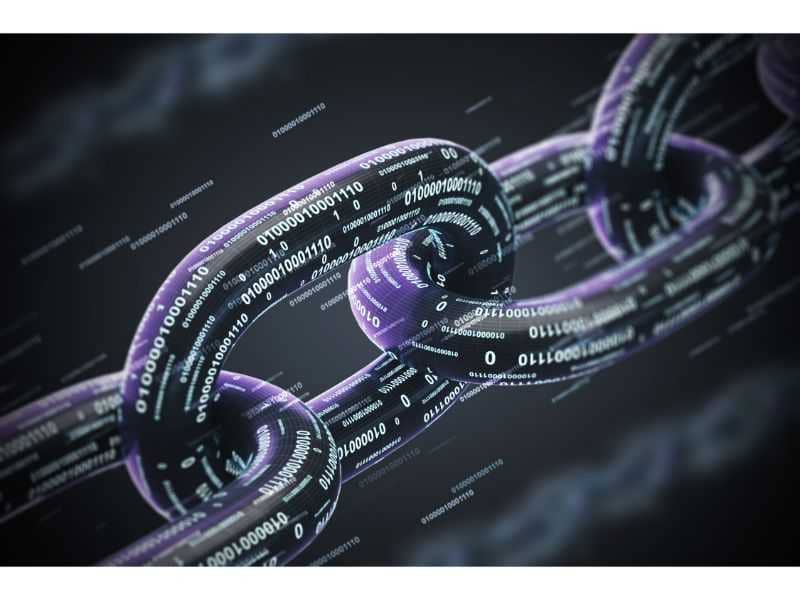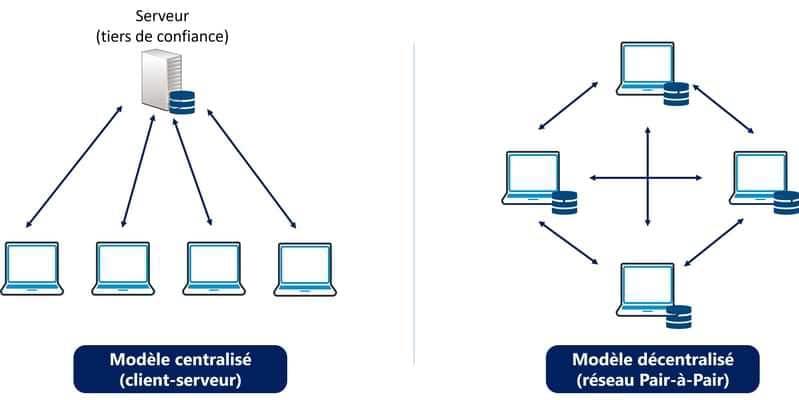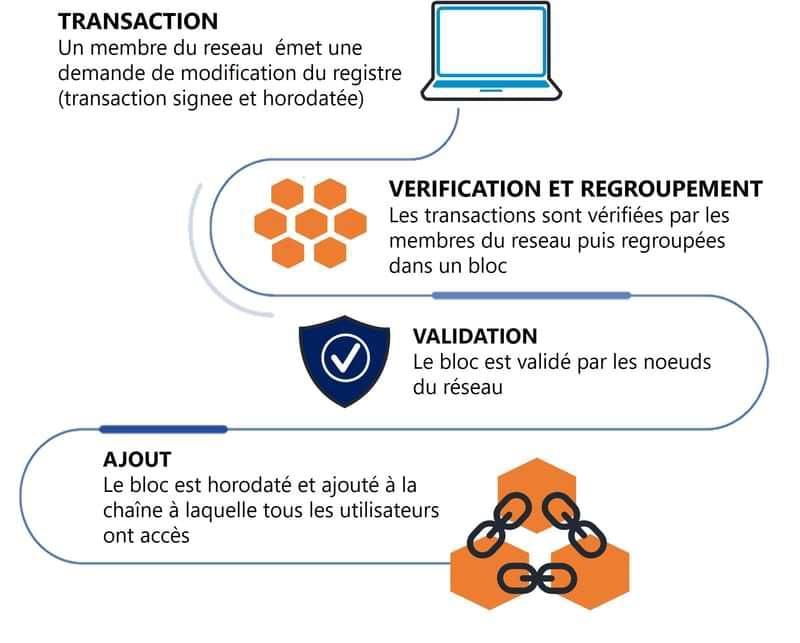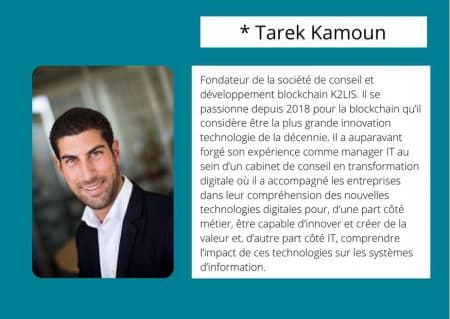Blockchain technology is not just about bitcoin and cryptocurrencies - far from it! Its use is gaining ground in many sectors, whether to secure transactions, validate contracts, guarantee the ownership of an asset or the traceability of an operation. ORSYS trainer and blockchain specialist Tarek Kamoun* reveals the workings and potential of blockchain.

All too often, blockchain technology has been wrongly associated with the rollercoaster ride of the cryptocurrency market, which is still making headlines in the media today. On the other hand, by now everyone has heard of NFT, Web3 and metavers at least once. These are all recent concepts behind the same technology: blockchain.
The result of such a cacophony of media coverage is that business and IT decision-makers can't see clearly enough about this technology, and even less about its potential for transforming their sector. To remedy this, we need to understand its origins and fundamentals, how it has evolved and, finally, ask the right questions: what exactly is blockchain? What are its business uses? Is it useful for my business?
How does blockchain work?
First of all, let's simply define what blockchain is. The blockchain is a decentralised database that enables information to be stored and transmitted transparently and securely. The information (transactions, title deeds, contracts, etc.) is contained in blocks of data protected by encryption that prevents them from being modified once they have been entered into the database.
Blockchain, a creator of trust
At present, to store and exchange valuable information, we go through trusted intermediaries: people, companies, banks, governments... But going through these intermediaries does not avoid errors, red tape, extra costs, possible conflicts of interest, or even corruption in the worst cases. Not to mention the fact that the decisions taken by these intermediaries are not always in our best interests.
This is where blockchain technology comes in. It creates digital trust between the various parties so that they can store and exchange information that has value, securely and without intermediaries.
How does this technology work?
To understand it, we need to review its essential characteristics:
- Blockchain is a decentralised and transparent technology
Think of blockchain as a large register of information (or database) shared by members of the same network. They all have the same copy of the information and can all read, write and approve entries.
This is the opposite of the traditional centralised web model, where players manage platforms using a client-server model. Now, anyone in the world with a server (or computer) can join the network and contribute to its decentralisation.

- Blockchain is a secure and immutable technology
Any member of the network can issue a request to modify the register (called a transaction) at any time, which is digitally signed (by the member himself using his public cryptographic key) and time-stamped. The approved transactions are then grouped together in blocks, which are themselves time-stamped and digitally linked together in chronological order (hence the name blockchain). The blockchain is therefore unforgeable and unalterable, making it possible to consult all the transactions that have taken place on the blockchain since its creation.

The advantages and disadvantages of blockchain
There are many advantages to using blockchain:
- Enhanced data security Once a piece of information is recorded on a blockchain, it becomes, in practice, unforgeable.
- Traceability and transparency The blockchain creates a complete audit trail from the moment it is created, which can be consulted by anyone.
- Productivity and efficiency gains blockchain eliminates or reduces the need for intermediaries to handle information exchanges.
But like any technology, it also has certain disadvantages:
- Complexity and lack of skills : the technology remains complex and recent. As a result, skills are still scarce and blockchain-based applications are costly to develop and maintain.
- Lack of performance: It is quite easy to understand that a decentralised technology can hardly compete with a centralised technology in terms of the number of transactions per second, which can compromise certain applications with demanding requirements.
- Complex user experience : asymmetrical cryptography, which allows a network member to sign its transactions, provides increased security for the network, but in return, users who lose their private keys lose access to their user account on the blockchain.
Developments in blockchain
By its very nature, blockchain is open to everyone: anyone can join the network and contribute. This is known as public blockchain. But over the years the concept of private blockchains or permissioned. Unlike public blockchains, these require permissions to join the network and contribute (read or write).
Moreover, over the last decade, this machine for creating trust has acquired two capabilities that have caused its use cases to explode:
- Power create cryptoassets (also known as tokens). They are either digital representations of real-world assets (e.g. a ticket, a loyalty point, a title deed, etc.), or new creations of digital assets such as a cryptocurrency or an NFT (non-fungible token), a unique object that is not interchangeable, such as a digital work of art (photograph, painting, etc.).
- Power create smart contracts. These are contracts that are automatically executed according to predefined conditions recorded on a blockchain. These cryptoassets follow conditional logic of the type "if such and such a condition is verified, then such and such an exchange of cryptoassets will be executed".
Blockchain should now be seen as a technology that makes it easy to create all kinds of cryptoassets.
These cryptoassets can be exchanged by users via digital wallets and manipulated by smart contracts.
They obviously inherit the essential characteristics of blockchain (decentralisation/sharing, transparency, immutability).

What applications for blockchain in business?
Once you've got past the explanation of this technology, you realise that it goes beyond the ultra-mediatised use case of cryptocurrencies and that its potential for businesses is well and truly there. Its business applications can be divided into three broad categories:
Guaranteeing the authenticity of information
Any industry or sector that needs to prove the authenticity and ownership of information can benefit from the immutability of blockchain, which creates an indelible record. Examples include managing the authenticity of diplomas, such as BCdiploma in France, and blockchain initiatives undertaken by certain countries facing problems of fraud involving land titles.
Improving traceability and operational efficiency
Any industry or sector that needs to ensure better traceability of its assets. This applies to the manufacturing, transport and supply chain industries. Blockchain makes it possible to track how often and by how many parties an asset is modified or changes hands. It also avoids conflicts linked to the reconciliation of divergent information between the various parties involved in the same asset.
Examples include major food retailers such as Carrefour, which gives consumers access to the entire production chain of products on its shelves, using a simple QR code affixed to several products (chickens, eggs, etc.). Or luxury goods leaders such as LVMH, Prada and Cartier, who have joined forces to create a blockchain platform designed to improve the traceability of their products and give customers direct access, via a digital certificate, to the history of the product purchased - from design to distribution - and to its certificates of authenticity.
The creation of new markets based on cryptoassets(tokens)
Any industry or sector that needs to revitalise a decentralised value exchange ecosystem or create a new one can take advantage of the digital capabilities of cryptoactives and smart contracts:
- Creating new markets based on digital assets formed from real assets. One example is RealT, which allows people to buy digital tokens representing shares in property, receive the rental income and vote on decisions relating to the property. Or Société Générale, which has issued financial instruments and debt securities in the form of digital tokens on the blockchain to improve their liquidity. And, of course, you can't have missed the phenomenon of NFTs, these certificates of digital ownership of digital content (image, music, video, etc.) which are turning the digital art world upside down.
- Eliminating intermediaries through new platforms and decentralised economies. For example, decentralised financial services such as credit or insurance, decentralised "Airbnb-like" housing, decentralised car rental, marketplaces for goods and services... that are more transparent, fair and democratic.
Is this useful for my business?
The fact remains, however, that few blockchain projects are actually seeing the light of day in companies. Decision-makers need to be made aware of the potential of blockchain so as not to miss out on this technological shift. Here are three fundamental questions to ask yourself to find out whether you should consider blockchain in your environment. If you answer yes to any of them, you know what you have to do:
- Does guaranteeing the immutability of data have any value for your company?
- Is your company facing a data reconciliation problem that is causing friction between several stakeholders?
- As value is not only monetary, is there a value exchange network to be created, secured or facilitated (e.g. providing liquidity) between several stakeholders?
Finally, don't forget that, like any innovative technology, blockchain can be used to communicate a company's innovative potential: having a blockchain project on your premises is an innovative way of discovering the technology, getting to grips with it and preparing it for wider use.
Our best training
- Blockchain, summary
- Blockchain for non-specialists
- Blockchain in finance: understanding Bitcoin and cryptocurrencies
- Blockchain, understanding the theory, practice and use cases in business
Find all our training courses in


